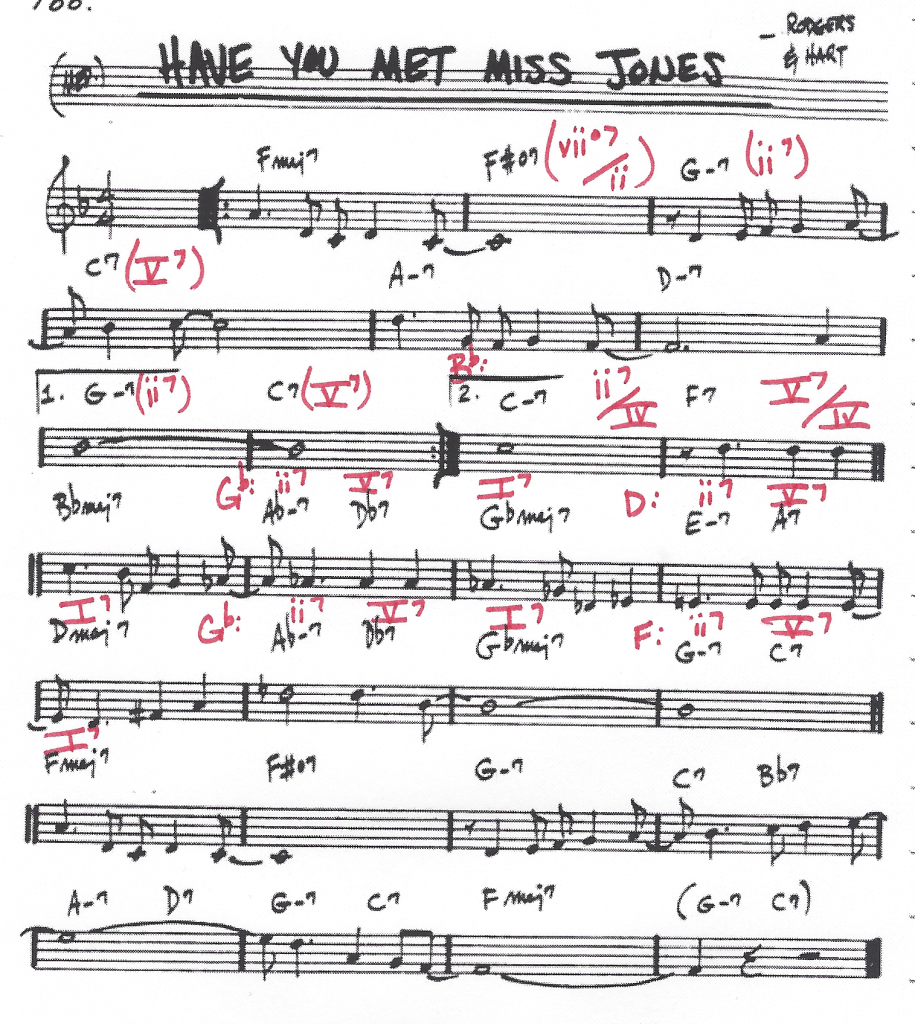Diatonic Seventh Chords in Major
Check your understanding of the following chart. You should be able to identify seventh chords by their theoretical name (major-minor seventh) and by their common name (dominant seventh).


Diatonic Seventh Chords in Harmonic Minor
Look over the same chart in the parallel harmonic minor. Notice that the quality of the dominant seventh hasn’t changed, but that there are alterations to the supertonic and leading tone seventh chords.


Secondary Supertonic Seventh
We’ve looked at using secondary dominant and leading tone chords as ways to temporarily tonicize non-tonic chords. In many idioms of tonal contemporary music, the secondary supertonic seventh chord can precede a secondary dominant to give even greater weight to the tonicization. These are often called “two-five-one” progressions. Although the usefulness of Roman Numeral Analysis continues to wane as music becomes more chromatic, using roman numerals with brackets to denote ii-V-I progressions can help the analyst track changing tonal centers in the music they are studying.
Take a look at the bridge of the jazz standard “Have You Met Miss Jones” to see some ii-V-I progressions in practice.



Leave a Reply